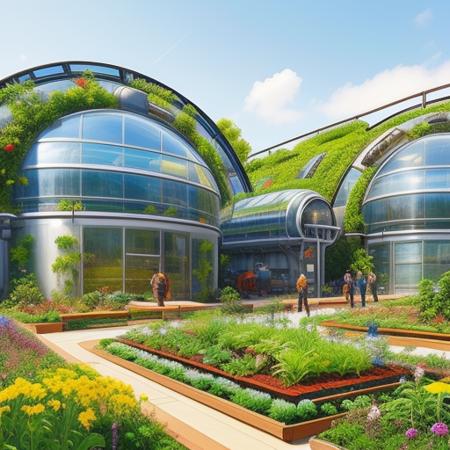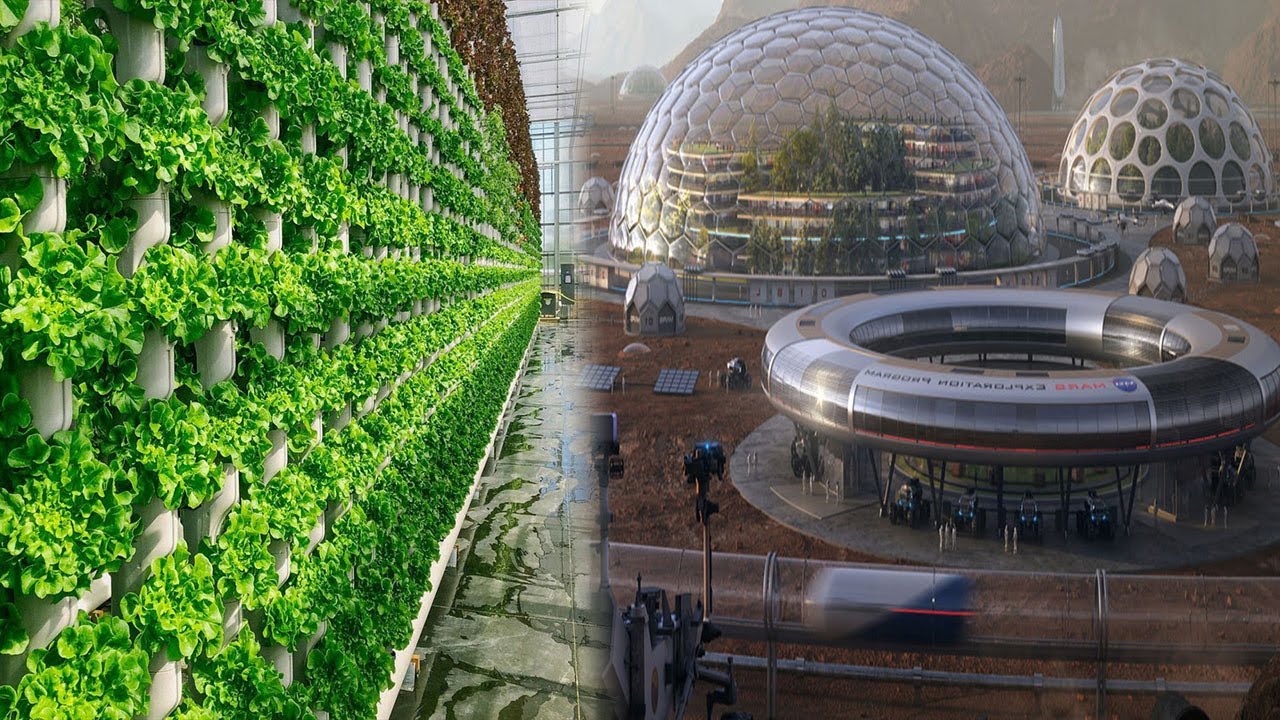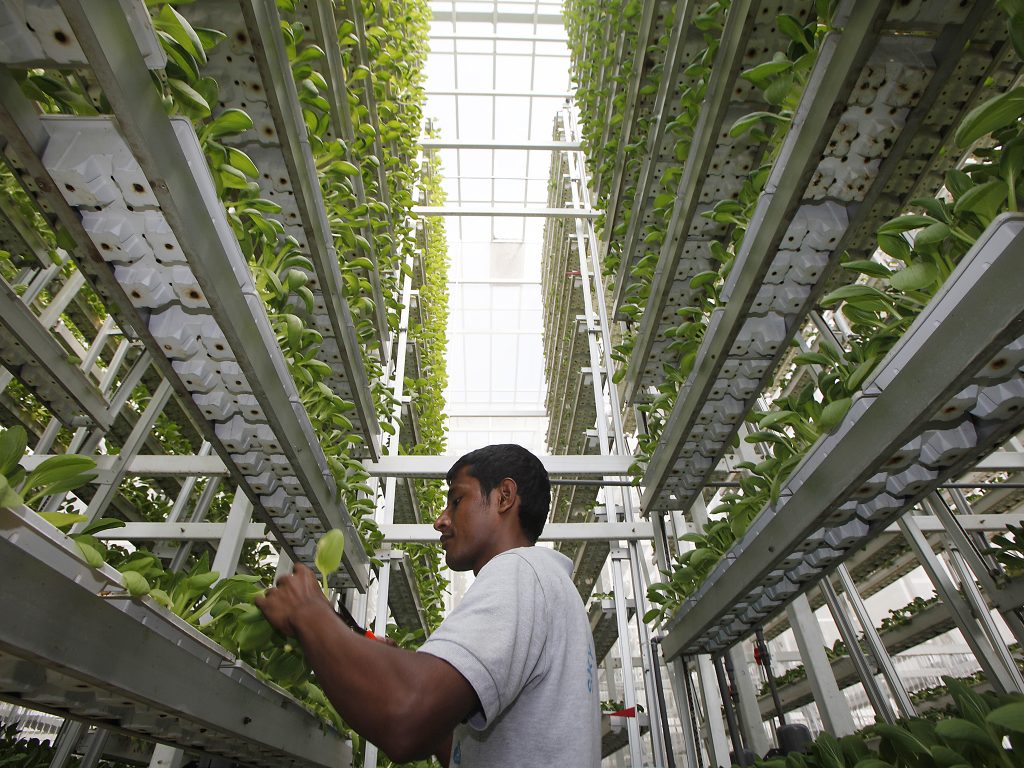
Vertical Farming Infrastructure: Revolutionizing Agriculture for a Sustainable Future
Introduction
Vertical farming infrastructure is a revolutionary concept that has gained significant attention in recent years. This article aims to provide a comprehensive overview of this innovative approach to agriculture, exploring its historical background, key concepts, main discussion points, case studies, current trends and developments, challenges and controversies, future outlook, and references.
Historical Background
The history of vertical farming can be traced back to ancient civilizations, where techniques such as terraced farming were employed to maximize agricultural output in limited spaces. However, the modern concept of vertical farming infrastructure emerged in the early 20th century with the introduction of the concept of aeroponics by botanist Dr. F. Todd in the 1920s. Since then, vertical farming has evolved significantly, incorporating advancements in technology and agricultural practices.
Key Concepts and Definitions
Vertical farming infrastructure refers to the design, technology, and equipment used to cultivate crops in vertically stacked layers or vertically inclined surfaces, utilizing artificial lighting and controlled environments. Important terms related to vertical farming infrastructure include hydroponics, which is the method of growing plants without soil, and aeroponics, which involves growing plants with their roots suspended in air and misted with nutrient-rich water. Controlled environment agriculture ensures optimal growing conditions through precise control of temperature, humidity, and lighting.

Main Discussion Points
Point: Design and Layout of Vertical Farming Infrastructure
Efficient space utilization is crucial in vertical farming infrastructure. Various design options are available for vertical farms, including vertical towers, multilayered shelves, and vertical walls. These designs maximize the use of limited space, allowing for higher crop yields per square foot. Vertical growing systems and stacking techniques further enhance space utilization, enabling the cultivation of a diverse range of crops in a compact area.
Point: Technologies and Equipment Used in Vertical Farming Infrastructure
LED lighting has revolutionized indoor farming by providing energy-efficient and customizable light spectra tailored to specific crop requirements. Automation and robotics play a significant role in vertical farming infrastructure, streamlining processes such as planting, harvesting, and monitoring plant health. Climate control systems, including temperature and humidity regulation, ensure optimal growing conditions. Advanced irrigation methods, such as drip irrigation and nutrient film technique, efficiently deliver water and nutrients to plants.
Point: Sustainability and Environmental Impact of Vertical Farming Infrastructure
Vertical farming infrastructure offers numerous sustainability benefits. By utilizing hydroponics and aeroponics, it conserves water resources by minimizing water usage compared to traditional farming methods. Additionally, vertical farms can be powered by renewable energy sources, reducing their carbon footprint. However, potential negative environmental impacts, such as the energy-intensive nature of indoor farming, should be addressed through energy-efficient practices and renewable energy adoption.

Case Studies or Examples
Several successful vertical farming infrastructure projects serve as inspiring examples. For instance, the “Vertical Harvest” project in Wyoming utilizes a multistory greenhouse to grow a variety of crops, providing fresh produce year-round to the local community. Another notable example is “Plenty,” a vertical farm in California that combines robotics and data analytics to optimize crop growth and minimize resource consumption.
Current Trends or Developments
Advancements in vertical farming infrastructure technology are continuously being made. These include the use of artificial intelligence for precise monitoring and management of plant growth, the integration of vertical farming with smart home systems, and the development of specialized plant breeding techniques for vertical farming environments. Researchers are also exploring the potential of vertical farming for the cultivation of nontraditional crops, such as medicinal herbs and algae.
Challenges or Controversies
Implementing and scaling vertical farming infrastructure face several challenges. Cost is a significant barrier, as the initial investment in technology and infrastructure can be substantial. Additionally, there are concerns regarding the scalability of vertical farming to meet the demands of a growing global population. Some critics argue that the energy-intensive nature of indoor farming outweighs its environmental benefits.
Future Outlook
The future implications of vertical farming infrastructure are promising. As urbanization continues to increase, vertical farming offers a solution to produce food locally, reducing reliance on long-distance transportation. Additionally, vertical farming has the potential to contribute to food security by providing a consistent supply of fresh produce regardless of weather conditions or geographical limitations. It also holds promise for sustainable agriculture by minimizing water usage, land requirements, and the need for pesticides.

Conclusion
Vertical farming infrastructure represents a groundbreaking approach to agriculture, addressing the challenges of limited space, resource constraints, and environmental sustainability. By optimizing space utilization, leveraging advanced technologies, and embracing sustainable practices, vertical farming has the potential to revolutionize food production and contribute to a more resilient and sustainable future.
References
Despommier, D. (2010). The Vertical Farm: Feeding the World in the 21st Century. Thomas Dunne Books.
Choudhury, D., & Kwon, T. H. (2017). Vertical Farming Systems: Sustainable Agriculture for the Future. Sustainability, 9(9), 1661.
Food and Agriculture Organization of the United Nations. (2019). Vertical Farming Systems: Towards Sustainable Urban Agriculture. Retrieved from http://www.fao.org/3/i9037en/I9037EN.pdf




